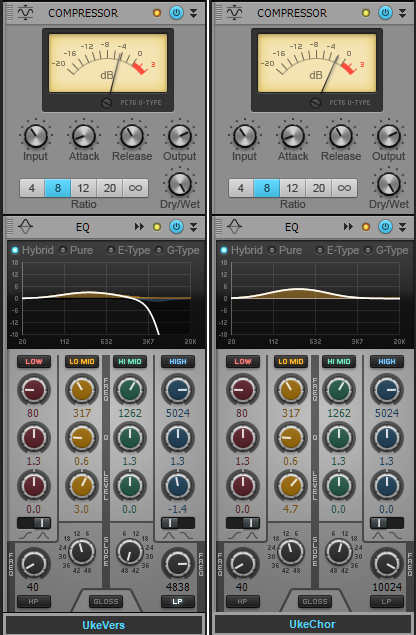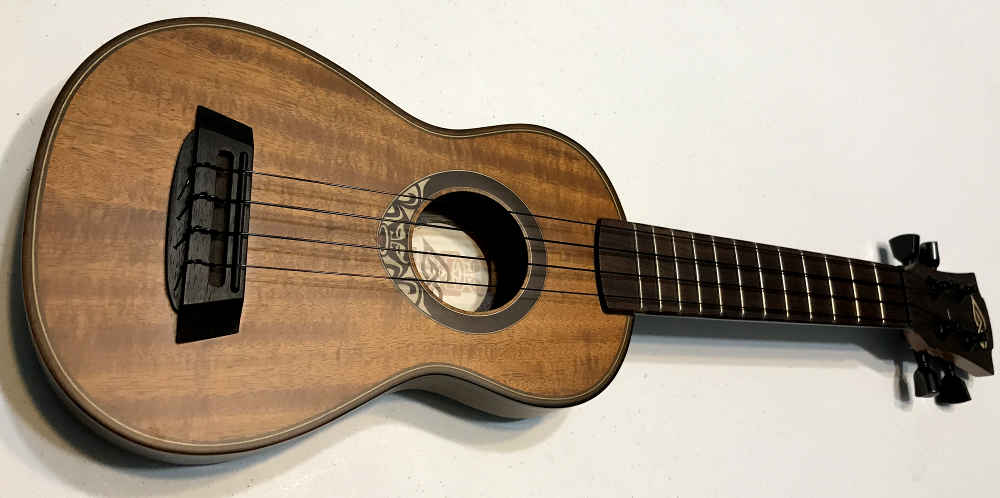A soprano ukulele may look like a toy, but what something looks like may not relate to what happens when it’s in front of a mic
I admit it—although ukuleles are fun to carry around for quick musical noodling, I never took them seriously. However, one day while fooling around I picked up my Lâg soprano ukulele and came up with a riff that seemed like a good foundation for a song. But I’d never recorded ukulele before, so there was a learning curve ahead…and here’s what I learned.
WHY EVEN BOTHER?
A soprano ukulele may look like a toy, but what something looks like doesn’t relate to what it sounds like when you get it in front of a mic—think of all the guitar players who turn a practice amp up to 10 and sound like a stack.
After recording the ukulele, I was shocked at how good it sounded in a track. The combination of nylon strings and a different tuning range were a perfect complement to acoustic guitar and other tracks. Even a musician friend who really knows his stuff couldn’t place the sound—guitar with a capo? Some world music instrument? In some ways, it fills the same kind of sonic hole as a guitar with Nashville tuning (i.e., a 12-string with only the six highest-pitched strings).
Although soprano ukuleles aren’t the most common ukulele variant, at least for me they provide the best balance and texture when integrated into songs. From here on, all references to “ukulele” refer to a soprano ukulele. You can find a good soprano ukulele for under $100, and I’ve played some decent ones that are under $50.
MIKING THE UKULELE
I try to get the sound right at the source—I’m happiest when no EQ is required, but is simply optional for making an instrument fit better in a mix. A ukulele doesn’t have the “girth” of an acoustic guitar, so my guitar-miking knowledge was irrelevant and I needed to start from scratch. Contact mics were out, because the body was too prone to pick up noise. Dynamic mics didn’t do justice to the transients, so I tried several condenser mics. The Neat King Bee, a large diaphragm condenser, won out. Its sensitivity is important for capturing all the nuances, and the custom audio output transformer keeps the noise low.
As to mic placement, standing up and setting up the mic about 6 inches away from the ukulele produced the best results. Interestingly, using a Primacoustic Voxguard to shield the mic from the room acoustics gave a warmer, fuller, more intimate sound. Without the Voxguard, although the sound was more “accurate,” it seemed thinner.
TUNING
The standard tuning is G C E A, as arranged on the staff below. However, ukuleles are tough to keep in tune for several reasons.

Nylon strings tend to stretch when first replaced, so you’ll be touching up the tuning often. I use a Planet Waves PW-CT-12 NS Micro Headstock Tuner, which fits easily on the ukulele’s headstock.
Furthermore, the neck is short and unless you have small hands, it’s difficult to play the ukulele without pushing some notes out of tune when fingering them. So…I cheat. After recording a part, I use Melodyne Editor’s polyphonic pitch correction capabilities to clean up any tuning errors.
SIGNAL PROCESSING
Despite its small size, a ukulele’s bright, percussive sound can “take over” a track—not unlike a tambourine, albeit for different reasons. For my first few mixes with ukuleles, I’d listen back and find the level too high.

Some ukulele tracks required no EQ or dynamics—just a little reverb and console emulation—and these were mixed fairly low. In most cases, though, a little compression helped tame the peaks and transients.
However in one song, the ukulele played for both the verses and choruses. The verses (left) were overall more quiet, and the ukulele was just too prominent. Pulling back with a 48 dB/octave lowpass filter around 5 kHz tamed the highs, and a slight boost around 300 Hz—where I normally cut a bit—added some body and fullness. In the chorus (right), where the song really opened up, the highs were left alone and again, a boost around 300 Hz added body.
Ukuleles also seem enamored of reverb, although shorter decays were most effective in maintaining articulation. Typically, RT60 times around 600-700 ms sounded about right.
SERIOUSLY? UKULELE?
Yes, seriously. A ukulele doesn’t cost much, can add new textures you wouldn’t have otherwise, and lends itself to processing so it fits well in a track. I’ve gone from being a ukulele cynic to a fan. An added bonus is that because it uses a different tuning, it encourages me to play with different fingerings and has kicked off several riffs that gave birth to songs. What’s not to like? Forget the stereotypes, and have fun.
